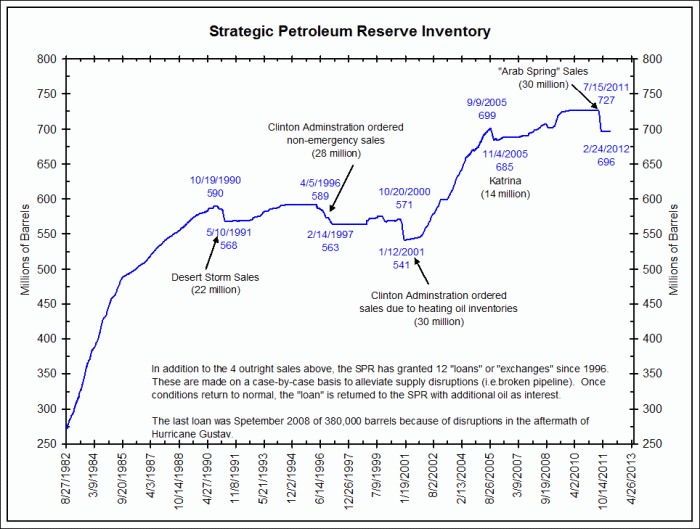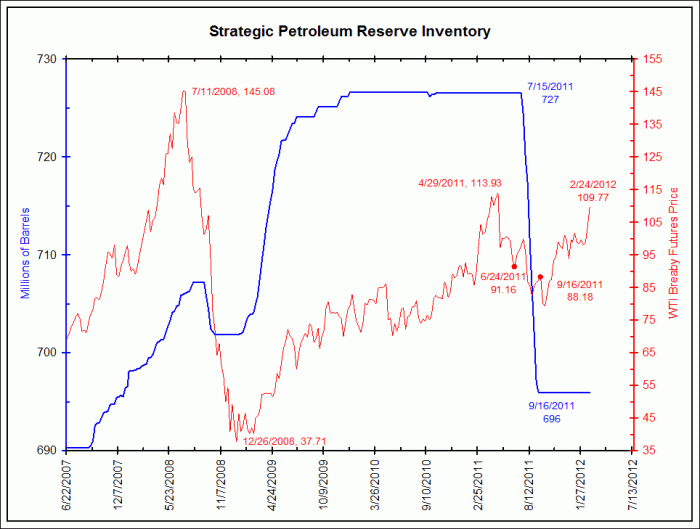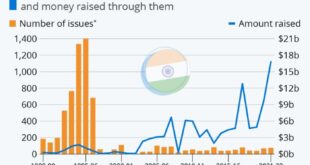Oil prices cut losses to remain on track for weekly gains after hefty Fed cut, a move that sent ripples through the global energy market. The Federal Reserve’s decision to lower interest rates has sparked a wave of speculation about the future of oil prices, with analysts closely watching how this move will impact supply and demand dynamics.
The recent volatility in oil prices is a complex interplay of factors, including the ongoing global economic uncertainty, geopolitical tensions, and the ever-evolving energy landscape. The Federal Reserve’s rate cut is just one piece of the puzzle, adding another layer of complexity to an already volatile market.
Understanding the dynamics of this intricate system is crucial for navigating the turbulent waters of the global oil market.
Oil Price Volatility
The recent fluctuations in oil prices have been a topic of intense discussion, with the Federal Reserve’s interest rate cut adding another layer of complexity to the already volatile market. The move by the Fed, aimed at stimulating economic growth, has had a mixed impact on oil prices, highlighting the intricate interplay between monetary policy and commodity markets.
Historical Trends of Oil Prices in Relation to Interest Rate Changes
The relationship between oil prices and interest rates is complex and has evolved over time. Historically, lower interest rates have often been associated with increased economic activity, leading to higher demand for oil and, consequently, higher prices. However, this correlation is not always straightforward, as other factors, such as supply disruptions, geopolitical tensions, and global economic conditions, can also significantly influence oil prices.For instance, during the 2008 financial crisis, despite aggressive interest rate cuts by central banks worldwide, oil prices plummeted due to a sharp decline in global demand.
This illustrates that the impact of interest rate changes on oil prices is not always predictable and depends on the specific economic context.
Factors Contributing to the Current Oil Price Movement
The current oil price movement is a result of a confluence of factors, including:
- Federal Reserve’s Interest Rate Cut:The recent interest rate cut by the Federal Reserve has injected liquidity into the market, potentially boosting economic growth and increasing demand for oil. However, the impact of this move on oil prices is still being assessed, as other factors are also at play.
- Global Economic Outlook:The global economic outlook remains uncertain, with concerns about slowing growth in major economies, such as China and Europe. This uncertainty can impact oil demand and, consequently, prices.
- OPEC+ Production Cuts:The Organization of the Petroleum Exporting Countries (OPEC) and its allies (OPEC+) have been implementing production cuts to support oil prices. While these cuts have helped to stabilize the market, the effectiveness of this strategy in the long term remains to be seen.
- Geopolitical Tensions:Geopolitical tensions, such as the ongoing conflict in Ukraine, can disrupt oil supply chains and lead to price volatility. The potential for further disruptions in oil production or transportation due to geopolitical events remains a significant risk factor for oil prices.
- Energy Transition:The transition to renewable energy sources is expected to have a long-term impact on oil demand. While the shift to clean energy is gradual, it could eventually lead to a decline in oil consumption, affecting prices in the future.
The Federal Reserve’s Role
The Federal Reserve’s decision to cut interest rates has sent ripples through the financial markets, and the oil market is no exception. This move, aimed at stimulating economic growth, has implications for oil demand and supply, ultimately influencing prices.The Federal Reserve’s rate cut is a powerful tool in its arsenal to manage the economy.
By lowering interest rates, the Fed makes it cheaper for businesses and individuals to borrow money, encouraging investment and spending. This, in turn, can lead to increased economic activity and potentially higher demand for oil.
The Economic Rationale
The Fed’s decision to cut rates is often driven by concerns about slowing economic growth. In such situations, the Fed aims to inject liquidity into the market, hoping to stimulate borrowing and spending, ultimately boosting economic activity.
Impact on Oil Demand and Supply
A rate cut can impact oil demand in several ways:* Increased economic activity:Lower interest rates can stimulate economic growth, leading to increased industrial production and consumer spending, both of which rely on oil.
Stimulated investment
Businesses may be more inclined to invest in expansion projects when borrowing costs are lower, leading to increased demand for oil in various sectors.
Currency depreciation
A rate cut can weaken the US dollar, making oil imports cheaper and potentially boosting demand.However, the impact on oil supply is more nuanced:* Increased production:A rate cut can encourage oil producers to invest in new production projects, leading to a potential increase in supply.
Reduced investment
Conversely, if producers are uncertain about future demand due to economic volatility, they may delay or cancel investments, leading to a slowdown in supply growth.
Comparison with Previous Rate Cuts
The impact of a rate cut on oil prices depends on various factors, including the overall economic climate, global oil supply, and investor sentiment. * Previous rate cuts:In the past, rate cuts have often been followed by periods of increased oil demand, leading to price rises.
For example, the Fed’s rate cuts during the 2008 financial crisis were followed by a significant rebound in oil prices.
Current context
The current rate cut is happening in a complex economic environment marked by global trade tensions and geopolitical uncertainties. The impact on oil prices will likely depend on how these factors play out.
Global Oil Market Dynamics

The global oil market is a complex web of interconnected factors, with numerous players and influences constantly shaping oil prices. This dynamic landscape is characterized by the interplay of geopolitical events, economic conditions, and supply and demand forces, each contributing to the volatility we witness in oil prices.
Key Players and Their Roles
The global oil market is dominated by a few key players, each with a distinct role in influencing oil prices.
- OPEC (Organization of the Petroleum Exporting Countries):This cartel of oil-producing nations, primarily located in the Middle East, wields significant influence over global oil supply. OPEC members coordinate production levels to maintain a balance between supply and demand, thereby impacting oil prices. OPEC’s decisions on production quotas can have a substantial impact on global oil prices.
For example, in 2022, OPEC+ (OPEC and its allies) decided to cut oil production, which led to a surge in oil prices.
- Non-OPEC Producers:Countries like the United States, Russia, and Canada are major oil producers outside OPEC. These nations play a significant role in global oil supply, often acting independently of OPEC decisions. Their production decisions can also impact oil prices, particularly when there are disruptions or changes in output.
- Oil Consumers:Major oil consumers, such as China, the United States, and India, exert significant influence on oil prices through their demand patterns. Economic growth and industrial activity in these countries drive oil consumption, influencing global demand and ultimately impacting prices. For instance, during periods of economic slowdown, oil demand typically declines, leading to lower oil prices.
- Oil Traders and Speculators:Financial institutions and individuals involved in oil trading and speculation play a role in price fluctuations. Their actions can amplify price movements, especially during periods of market uncertainty or volatility. For example, during the 2008 financial crisis, oil prices plummeted as traders and investors sold off their oil holdings.
Impact of Geopolitical Events and Economic Conditions
Geopolitical events and economic conditions have a profound impact on oil production and consumption, ultimately influencing oil prices.
- Political Instability:Conflicts and political instability in oil-producing regions can disrupt production, leading to supply shortages and price spikes. For example, the 2011 Libyan civil war significantly reduced Libyan oil production, pushing oil prices higher.
- Economic Growth:Strong economic growth in major oil-consuming countries typically leads to increased demand for oil, pushing prices up. Conversely, economic downturns or recessions can reduce oil demand and lead to lower prices. The global economic slowdown in 2008, for instance, contributed to a sharp decline in oil prices.
- Sanctions and Embargoes:Sanctions imposed on oil-producing countries can restrict their ability to export oil, affecting global supply and prices. For example, sanctions imposed on Iran in recent years have limited its oil exports, contributing to higher oil prices.
Global Oil Supply and Demand Dynamics
The balance between global oil supply and demand is a key driver of oil prices.
- Supply:Global oil supply is influenced by factors such as production levels, capacity constraints, and technological advancements. The availability of new oil reserves, investment in exploration and production, and geopolitical factors also play a role. For example, the discovery of new oil fields or technological breakthroughs in shale oil extraction can increase global oil supply, potentially leading to lower prices.
- Demand:Global oil demand is driven by factors such as economic growth, population growth, and energy consumption patterns. The demand for oil is also influenced by government policies, technological advancements in energy efficiency, and the adoption of alternative energy sources. For example, the increasing adoption of electric vehicles and renewable energy sources can lead to a decrease in oil demand, potentially putting downward pressure on oil prices.
Outlook for Oil Prices
The current market conditions and economic forecasts paint a complex picture for future oil price movements. While the recent Fed rate cut has provided some short-term support, a multitude of factors will influence the trajectory of oil prices in the coming months and years.
Key Factors Influencing Future Oil Prices, Oil prices cut losses to remain on track for weekly gains after hefty Fed cut
A range of factors, both internal and external to the oil market, will play a significant role in shaping future oil prices. These include:
- Global Economic Growth:A robust global economy typically translates into higher demand for oil, driving prices upwards. However, concerns about a potential recession, particularly in major economies like the US and China, could lead to a decline in oil demand and prices.
- Geopolitical Risks:Tensions in key oil-producing regions, such as the Middle East, can disrupt supply chains and trigger price spikes. The ongoing conflict in Ukraine, for example, has already had a significant impact on global energy markets.
- OPEC+ Production Decisions:The Organization of the Petroleum Exporting Countries (OPEC) and its allies (OPEC+) have a considerable influence on global oil supply. Their production decisions, often driven by political and economic considerations, can significantly impact oil prices.
- Technological Advancements:The development of renewable energy sources, such as solar and wind power, could potentially reduce demand for oil in the long term. However, the transition to a low-carbon economy is a gradual process, and the impact on oil prices is likely to be gradual as well.
- Inventory Levels:Global oil inventories are a key indicator of supply and demand dynamics. High inventory levels can put downward pressure on prices, while low inventories can lead to price increases.
- Currency Fluctuations:The value of the US dollar, the currency in which oil is typically traded, can impact oil prices. A strong dollar makes oil more expensive for buyers using other currencies, potentially leading to lower demand and prices.
Impact on Consumers and Businesses
The ebb and flow of oil prices have a profound impact on consumers and businesses alike, influencing their spending habits, operational costs, and overall economic well-being. Understanding these dynamics is crucial for navigating the complexities of the global energy market.
Impact on Consumers
The price of oil directly affects the cost of transportation, as gasoline and diesel fuel are derived from crude oil. When oil prices rise, consumers face higher fuel costs, which can significantly impact their budgets, especially for those who rely heavily on personal vehicles for commuting and travel.
Additionally, increased oil prices can lead to higher costs for goods and services, as businesses pass on these expenses to consumers.
Rising oil prices can erode consumer purchasing power, leading to a decline in discretionary spending and potentially slowing economic growth.
Impact on Businesses
Businesses across various sectors are affected by oil price fluctuations, with industries heavily reliant on oil experiencing the most significant impact. The transportation sector, for example, faces increased operating costs when fuel prices rise, impacting trucking, shipping, and air travel.
Manufacturing companies also experience higher input costs due to increased energy expenses, which can affect production costs and ultimately, product prices.
The energy sector, which includes oil and gas producers, refiners, and distributors, is particularly vulnerable to oil price volatility. Rising oil prices can lead to increased profits for energy companies, but falling prices can result in decreased revenue and potential financial distress.
Understand how the union of Earnings call: Lennar’s third-quarter results show an 8% increase in home starts can improve efficiency and productivity.
Benefits and Drawbacks of Oil Price Fluctuations
| Stakeholder | Rising Oil Prices | Falling Oil Prices |
|---|---|---|
| Consumers | Increased transportation costs, higher energy bills, reduced purchasing power | Lower transportation costs, reduced energy bills, increased purchasing power |
| Businesses | Higher operating costs, potential for price increases, reduced profitability | Lower operating costs, potential for price reductions, increased profitability |
| Energy Companies | Increased profits, higher revenue | Decreased profits, lower revenue, potential financial distress |
| Government | Increased tax revenue from energy companies, potential for higher inflation | Reduced tax revenue from energy companies, potential for economic slowdown |
End of Discussion

The impact of the Fed’s rate cut on oil prices remains to be fully understood, as the market navigates a sea of uncertainty. The future of oil prices is a delicate dance between global economic forces, geopolitical tensions, and technological advancements.
As we move forward, it is crucial to stay informed about the key factors that will shape the trajectory of oil prices, ensuring we are prepared for whatever the future holds.
Clarifying Questions: Oil Prices Cut Losses To Remain On Track For Weekly Gains After Hefty Fed Cut
How does the Fed’s rate cut affect oil prices?
A lower interest rate can stimulate economic growth, potentially leading to increased demand for oil. However, the impact is complex and can vary depending on other economic factors.
What are the other factors influencing oil prices?
Oil prices are influenced by a range of factors, including global economic growth, geopolitical events, production levels, and technological advancements.
What are the potential risks to oil prices?
Risks to oil prices include global economic slowdowns, political instability in major oil-producing regions, and the development of alternative energy sources.
 CentralPoint Latest News
CentralPoint Latest News




